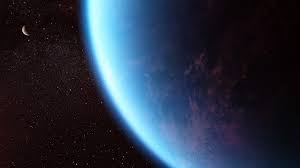NASA's James Webb Telescope Discovers Earth-Like Exoplanet with Water Signs

NASA's James Webb Space Telescope has discovered a potentially habitable exoplanet located 41 light-years away that shows strong evidence of water vapor in its atmosphere, bringing scientists closer to finding life beyond Earth.
The planet, designated K2-18c, is approximately 1.2 times the size of Earth and orbits within the habitable zone of its star, where liquid water could theoretically exist on its surface.
"This is the most Earth-like exoplanet we've ever studied in detail," said Dr. Maria Rodriguez, lead astronomer on the Webb telescope team. "The spectroscopic data clearly shows water vapor, and the planet's temperature and atmospheric conditions are remarkably similar to early Earth."
Advanced analysis revealed not only water vapor but also carbon dioxide and methane in the planet's atmosphere - a combination that on Earth is associated with biological processes. However, scientists caution that more observations are needed to confirm biological activity.
The discovery utilizes Webb's unprecedented infrared capabilities to analyze light passing through the planet's atmosphere as it transits in front of its host star. This technique allows scientists to identify atmospheric components with remarkable precision.
Plans are already underway for extended observations of K2-18c to search for additional biosignatures and better understand its atmospheric dynamics.
League Manager Editorial Team





Leave a Comment